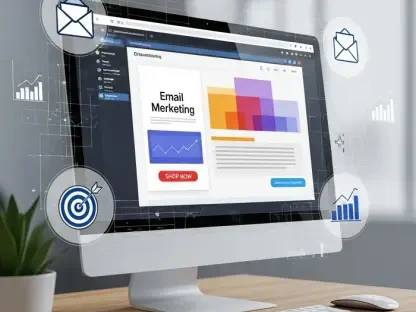The mobile economy, historically dominated by Apple and Google, is undergoing significant changes. After a nine-month investigation, the UK’s Competition and Markets Authority has classified both tech giants as having “strategic market status” for their mobile platforms. This designation is not just a local regulatory issue. It indicates a global movement towards breaking down the barriers that have shaped mobile app distribution and monetization for more than a decade.
For B2B leaders, this moment represents a critical inflection point. The long-held rules governing access to customers, in-app payments, and platform control are being rewritten. Companies that have built their mobile strategies on the unshakable dominance of the App Store and Google Play must now prepare for a more open, complex, and potentially fragmented ecosystem. The era of total platform dependency is coming to an end, creating both significant opportunities and new strategic risks.
A Global Regulatory Ripple Effect
The CMA’s action does not exist in a vacuum. It is part of a worldwide movement to rein in the power of big tech gatekeepers. In Europe, the Digital Markets Act (DMA) is already forcing similar changes, compelling Apple to allow third-party app stores and alternative payment systems. This legislative pressure is creating a domino effect, with regulators in the US and Asia Pacific also scrutinizing anti-competitive practices in the mobile space.
This global momentum indicates that changes to the mobile duopoly are no longer a question of if, but rather of when and how. The primary concern focuses on the substantial power held by Google and Apple. Worldwide, the mobile app market is expected to reach 626.39 billion USD by 2030, growing at a CAGR of 14.3% from 2024 to 2030. The ability to control which apps are available and to mandate a 15-30% commission on transactions gives the platform holders immense leverage over the digital economy.
Recalibrating B2B Mobile Strategy
The designation of “strategic market status” empowers the Competition and Markets Authority to introduce targeted interventions. While not a finding of wrongdoing, it clears the path for actions that ensure a more competitive landscape. For B2B organizations, this regulatory shift necessitates a proactive reevaluation of their mobile strategy across three key domains.
1. Unlocking New Monetization Models
For years, the “platform tax” on in-app purchases has been a fixed cost of doing business. The potential to utilize third-party payment processors or direct users to external purchasing options could significantly alter the financial model for B2B SaaS applications. This opens the door to more flexible pricing, reduced transaction fees, and direct control over the customer billing relationship.
2. Diversifying Distribution Channels
The investigation noted that while Android allows for sideloading and third-party app stores, these methods provide only a “limited competitive constraint” on the Play Store. Future regulations could make these alternatives more viable. B2B firms could distribute specialized enterprise apps directly to clients, bypassing lengthy review processes and restrictive platform rules.
This creates a new set of strategic questions. How do you ensure brand consistency and a seamless user experience across multiple app stores? What new marketing investments are required to drive discovery outside of the centralized App Store and Google Play ecosystems?
Addressing these challenges will require a strategic approach that prioritizes user engagement and visibility. Companies may need to leverage targeted advertising, engage in partnerships with alternative app platforms, and invest in comprehensive analytics to understand user behavior across different environments. Exploring innovative ways to communicate value and usability will be essential in adapting to this evolving landscape.
3. Reducing Platform Risk
Dependency on a single platform for customer access is a significant business risk. A sudden change in algorithm, a rejected app update, or a new policy can disrupt revenue and customer relationships. A more open ecosystem enables businesses to mitigate risk in their mobile presence by establishing direct lines of communication and distribution with their customers, thereby fostering greater resilience.
A Concrete Scenario: The Field Service App
In the evolving B2B SaaS landscape, companies must adapt to market changes to enhance efficiency and drive revenue growth. One key area for improvement is software distribution management. A strategic shift in this aspect can yield significant benefits, particularly for companies that serve field service technicians.
Consider a B2B SaaS company providing a critical mobile app for field service technicians. Previously, every subscription sold through the app was subject to a 15% platform fee, and every update had to pass a multi-day review process.
With a more open framework, the company could deploy a direct-to-enterprise distribution model. By offering the app for download directly from its own website, it could immediately eliminate the platform commission, which for a company with 10,000 subscribers at $20/month translates to 200,000 USD in recaptured revenue annually. Updates could be deployed instantly, reducing the time to patch security vulnerabilities from days to hours.
This scenario illustrates the transformative potential of a direct software distribution model. It can boost revenue and enhance customer satisfaction by providing faster updates and improved security. Adopting these strategies positions businesses to thrive in a competitive landscape, underscoring the importance of agility in today’s fast-paced digital environment.
The Security Trade-Off of Openness
While a more open mobile world offers clear benefits, it also introduces new complexities, particularly in terms of security. One of the primary value propositions of the official app stores is their role in vetting applications for malware and protecting users from malicious software. More than half (53%) of organizations experienced a mobile-related security compromise in the last year.
As sideloading and alternative app stores become more common, CIOs and CISOs face a heightened challenge. Employees might unknowingly install unvetted applications on corporate-managed devices, opening the door to data breaches and other cyber threats. Enterprises will need to reinforce their mobile device management policies and invest in security solutions capable of monitoring app integrity regardless of the installation source.
This shift moves the burden of trust from the platform holder to the end-user and the enterprise. Building a robust security framework for a multi-store, multi-channel mobile environment will be non-negotiable.
Prepare for the New Mobile Era
The regulatory pressure on Apple and Google is set to intensify, making a wait-and-see approach untenable. B2B leaders should begin preparing now for a more decentralized mobile landscape. Here are the most essential steps you need to take:
Audit Your Platform Dependency: Quantify the exact revenue share paid to mobile platforms and map out all the ways their rules and review processes impact your operational agility. Understanding your current exposure is the first step.
Model Alternative Financial Scenarios: Evaluate the bottom-line impact of shifting to alternative payment processors or direct billing. What cost savings could be realized, and what are the upfront investment costs for building out the necessary infrastructure?
Pilot a Direct Distribution Channel: For Android-focused businesses, begin experimenting with direct app downloads. Test the user experience, measure adoption rates, and establish internal processes for managing updates and customer support outside of the Google Play Store.
Strengthen Mobile Security Protocols: Review and update your MDM and security policies to account for a world with more third-party app stores and sideloading. Educate employees on the risks and implement technology that can identify and mitigate threats from non-traditional sources. Over 80% of B2B buyers now use their mobile devices to make purchasing decisions, making mobile security a business-critical function.
The mobile ecosystem is maturing. The coming years will reveal whether the recent decline in mobile’s share of total traffic is a short-term anomaly or the start of a broader trend toward a more balanced digital environment. For B2B professionals, the message is clear: the mobile-first approach must now evolve into a mobile-flexible strategy built for an open and competitive future.
Conclusion
In conclusion, the findings in this article emphasize the importance of understanding the complexities of the issue. By examining different perspectives and utilizing relevant data, a clearer understanding of the factors influencing the topic can be gained. It is essential to continue thoughtful discussions and research to ensure decisions consider all viewpoints. A well-rounded approach will enhance understanding and lead to more effective solutions to the challenges faced.









